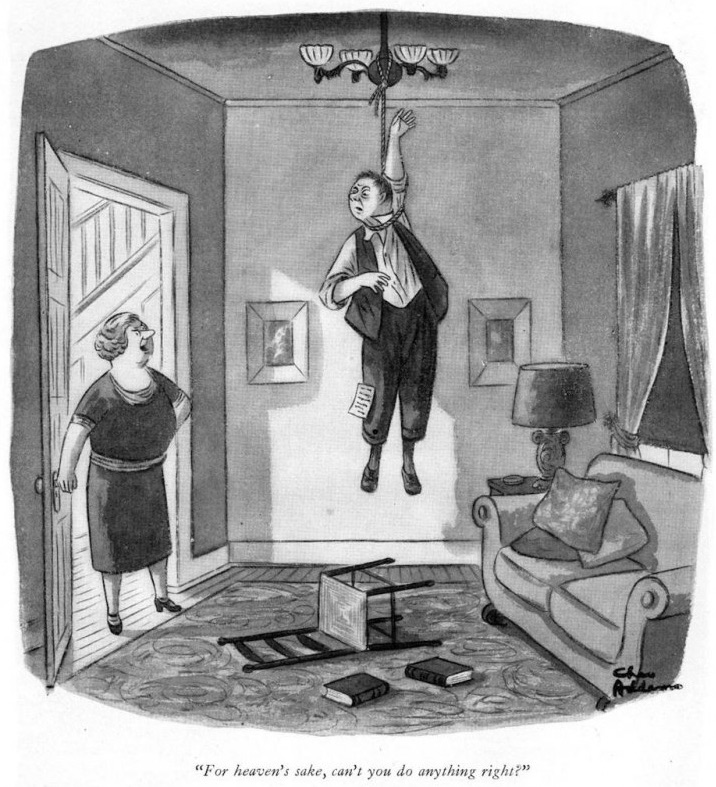This apparently gentle soul went on to produce disturbing work for over 60 years. In keeping with The New Yorker's perforation of social affection, these cartoons solicited a cruel shock of recognition at the expense of gentility. Behavioural codes (never mind the laws of physics) were completely subverted, artfully suggesting the most uncivilised outcome.
The characters who make up the Addams Family began to appear in his cartoons by 1937, jelling Addams' mordant identity for generations of readers. While they're not the persistent focus of his work, it's easy to see what people responded to in them. They're warped, yet friendly; an eccentric presence within an often threatening framework. His mise en scene conjured the mildew of Victorian gothic conservatories, intimating that forgotten customs, such as laying out the recently deceased in the front parlour, would not be considered off-base to the maladjusted characters in their hedge against the outside world.
Verbally describing The New Yorker single-panel cartoons, with their interrelated captions and drawing, can be a flat, awkward proposition. It's probably unnecessary in Addams' case, anyway. His situational cartoons, in themselves, are familiar icons. Just about everyone has seen his cartoons of ski tracks which run on both sides of the tree. He excelled at captionless "What's wrong with this picture?" cartoons, and drawings of bizarre whimsy and surreality.
Striking a precarious balance of urbanity and malevolence, Addams showed us the banality of evil - in a perky, cheerful manner - which only made things worse.



No comments:
Post a Comment